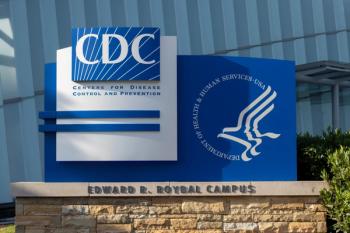
HIV Vaccine Demonstrates Durability Against Hard-to-Fight Strains
Vaccine found to provide durable protection against the “death star†HIV strain, which is notably hard to fight.
An investigational vaccine successfully protected against hard-to-fight HIV strains, with long-term efficacy from a single inoculation, according to a study published in Science Translational Medicine.
The vaccine, developed by researchers at the Scripps Research Florida campus, was tested against SIVmac239, also called the “death star” strain, which is known for being seemingly indestructible, according to the study. SIVmac239 is a type of simian immunodeficiency virus that replicates HIV in primates.
Different from most conventional vaccines, this vaccine uses a safe virus to fight the dangerous one, using muscle cells rather than immune cells to generate protective agents. The lab-made adeno-associated virus (AAV) carries a protective protein called eCD4-Ig, which features 2 HIV co-receptors: CD4 and CCR5. Once injected into the muscle, the vaccine causes muscle cells to produce this protective protein, which prevents HIV from being able to infect.
“We have solved 2 problems that have plagued HIV vaccine studies to date—namely, the absence of duration of response and the absence of breadth of response,” lead author Michael Farzan, PhD, said in a press release. “No other vaccine, antibody, or biologic protects against the 2 viruses for which we have demonstrated robust protection.”
For the study, the researchers tested the ability of eCD4-Ig to prevent SIVmac239 infection in macaques, administering eCD4-Ig to primates with the AAV before repeated escalated doses of the infection. Overall, the findings showed that the vaccine offered complete protection from high-dose SIVmac239 challenges that infected all 8 of the research animals. However, the study showed that animals could eventually become infected when exposed to atypically large loads of HIV, and that the virus is also capable of developing resistance to eCD4-Ig.
Subsequent analysis showed viral loads in the treated group were lower and eCD4-Ig put selective pressure on SIV, according to the study.
“The results of our paper are encouraging for the potential of AAV as a platform for prevention of disease generally, and in concert with eCD4 as an agent for stopping HIV infection,” Dr Farzan concluded. “We hope ultimately to prove that our approach is safe for both infected and at-risk persons at a cost that makes it useable everywhere.”
References
Farzan M, Gardner MR, Fellinger CH, et al. AAV-delivered eCD$-Ig protects rhesus macaques from high-dose SIVmac239 challenges. Science Translational Medicine. 2019. DOI: 10.1126/scitranslmed.aau5409
Newsletter
Stay informed on drug updates, treatment guidelines, and pharmacy practice trends—subscribe to Pharmacy Times for weekly clinical insights.




















































































































































































































